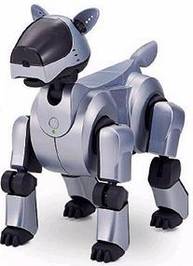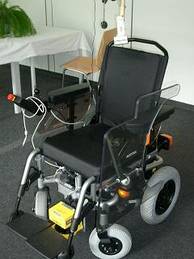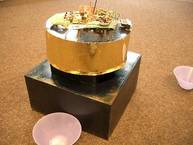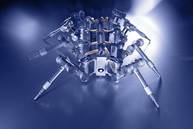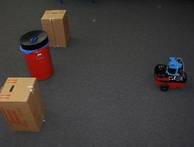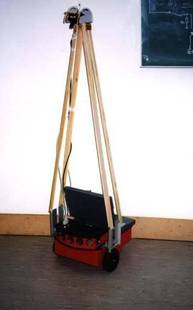| No. |
Name |
Date |
Type |
Participants, corpus size |
Mode |
Task |
Description |
Download |
| I1-7 |
Rolland_2 |
Jan/ Feb 2006 |
HRI using Rolland |
51 participants speaking native German and native & non-native English |
spoken |
Object localisation (static and dynamic); route instruction |
Verbal robot reactions; Robot movements are controlled by participant |
sample, sound1, sound2 (1.3MB) |
| I1-6 |
Aibo_2 |
Jun/ Jul/ Nov 2004 & Jun/ Jul 2005 |
HRI using Aibo, Box |
37 German approx. 25 min. each, 20 English |
spoken (& some written) |
Object identification, partly sequential; movement |
Verbal robot reactions and movement; Comparison between two robots |
sample |
| I1-5 |
Rolland |
May 2004 |
HRI using Rolland |
27 German approx. 20 min. each, 11 English |
spoken |
Object localisation (static and dynamic); route instruction |
Only input by participant, no reaction by robot; Robot movements are controlled by participant |
sample |
| I1-4 |
Web-experiment |
Oct 2003 - Oct 2004 |
Web-based corpus collection |
>180 native German, ~ 3000 contrib.; >200 native English, ~ 3500 contrib.; >100 nonnative English, ~ 1700 contrib.; approx. 10-15 min. each |
typed |
Object identification; route instruction |
Participants type spatial descriptions according to the given task with respect to various scenarios |
sample |
| I1-3 |
October |
Oct/ Nov 2003 |
HRI using Aibo, Scorpion, and Pioneer Speedy |
Aibo: 11 English, 23 German; Scorpion: 8 English, 22 German; Pioneer: 8 English, 33 German; approx. 20 min. each |
typed and spoken |
Object identification, partly sequential; movement |
Robot sometimes gives scene description; No detailed verbal feedback; Validation of improved implemented computational model of spatial relations; Additional test in HHI (a human is instructed) with 9 participants |
transcription movie1
movie2 (4.6M) |
| I1-2 |
Pioneer Experiment 2 |
Jul 2003 |
HRI using Pioneer Speedy |
29 German approx. 15 min. each, 482 instructions Complete corpus (xml) Complete extract of all dialogues (html) |
typed |
Object identification; movement |
Robot always gives scene description; Fairly detailed verbal feedback depending on modules; Validation of improved implemented computational model of spatial relations |
transcription movie
Documentation file (pdf) |
| I1-1 |
Pioneer Experiment 1 |
Feb 2003 |
HRI using Pioneer Speedy 25 |
German approx. 25 min. each, 1382 instructions Complete corpus (xml) Complete extract of the human-robot interaction data (html) |
typed and spoken |
Object identification; movement |
Robot sometimes gives scene description; No detailed verbal feedback; Validation of improved implemented computational model of spatial relations; Additional test in HHI (a human is instructed) with 9 participants |
transcription movie Documentation file (pdf) |
| |
Erlangen |
2003 (elicited at Er-langen) |
HRI using Aibo |
51 German approx. 30 min. each |
spoken |
Object identification, partly sequential; movement |
Cooperation with Erlangen research group (Anton Batliner); participants: schoolchildren; Only non-verbal robot reactions (movement) |
sample |
| |
Nats |
2002 (prior to official project start) |
HRI using Pioneer Speedy |
21 German approx. 15 min. each, 738 instructions |
typed |
Object identification; measure |
Pre-determined automatic verbal robot reactions |
sample |
| |
WSV |
2000 (prior to official project start) |
HRI using Pioneer Giraffe |
15 German, approx. 15 min. each, 467 instructions |
typed |
Object identification; movement |
Exploratory study; Only non-verbal robot reactions (movement); Validation of implemented computational model of spatial relations |
sample |
